Alina Georgiana Teodorescu, Lisbon, Portugal & Slanic Moldova, Romania
If you meet Alina Teodorescu in person, it is very likely that you will be left speechless at her sheer beauty, style, and panache from the very word go. That said, you will likely also discover that she is a person with certain leadership qualities that are possibly of high value to the realm of independent art practices today.
Alina is a Lisbon-based visual artist, and the Founder of In Context Slanic Moldova, Romania, an artist residency, which has been functioning since 2017. The title In Context is a translation of the Hindi word Sandarbh, and it is after the Sandarbh Artist Residency in Partapur, India, that Alina has named her own residency as well.
Despite not having visited Partapur until 2023, Alina had been following Sandarbh from afar, and having been deeply inspired by it, she decided to map Sandarbh onto her own homeland.
The beginning of 2023 started for me with the most meaningful project I have been part of for the last 10 years or perhaps in my entire professional life.
Born in Partapur, Rajasthan, 20 years ago, Sandarbh is a contemporary art residency program that I came across in 2016 in Mumbai. And, without even visiting it, it has radically changed my way of existing in the world, facilitating a transition from a self centred, voracious mindset to a nature and people empathy driven subsistence, giving me the means to manifest it when the need to do so was becoming acute.
In Context, the project that took over my life in 2017 is in fact Sandarbh.
– from Alina’s personal notes
And now, by participating in the Sandarbh residency myself, I had the chance to have it merge, as per the multitude of similarities that were created just by knowing it from far.
- Read all about In Context Slanic Moldova, Romania here on their website
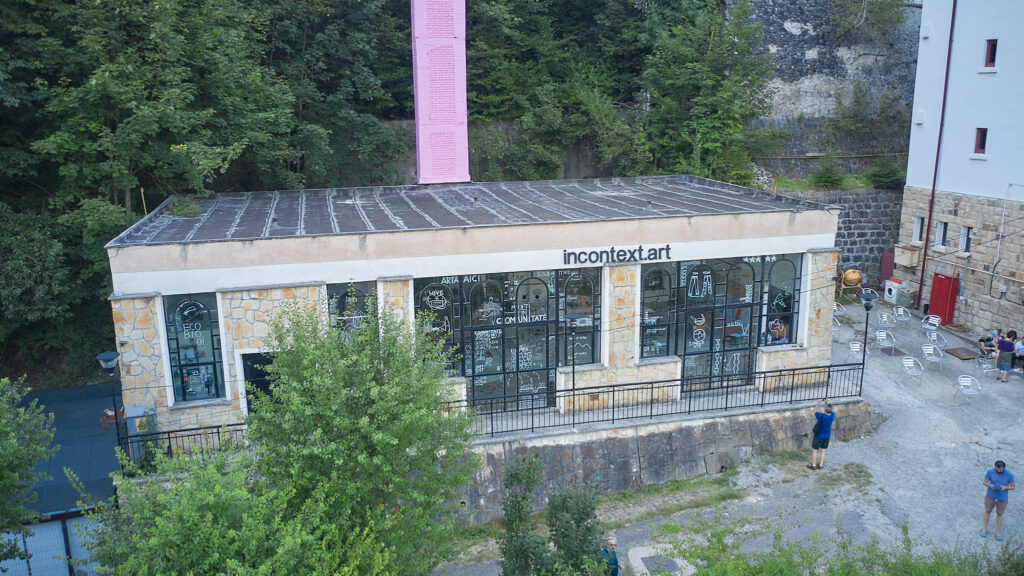
Happenchance Collab 101
My meeting, and collaboration with her was sheer happenchance. In Jan 2023, I received a call from my old friend, renowned artist, and the founder of Sandarbh, Chintan Upadhyay. He inquired if I could help Alina in putting up a music festival for Sandarbh’s 20th anniversary in Partapur. Chintan had thought of me, as I had organized similar events for Sandarbh in 2004 and 2007, and therefore I somewhat knew about the local musicians in the region.
When I spoke soon afterwards, to Alina over the phone, I was quite amused by one particular idea of hers – “a residency within a residency”. It was an idea that she wanted to use as the basis of her performance at Sandarbh. Alina who was an invited resident artist at Sandarbh, wanted to further invite local musicians as resident artists under the banner of In Context Slanic Moldova, Romania; and thereby Sandarbh & In Context Slanic Moldova, Romania would come together as one, in a music and arts festival.
I jumped at the opportunity to participate in “a residency within a residency” not merely because of Alina’s amazing charm, but also because the notion of a resident artist inviting another artist on their own volition, and as a part of the performance, seemed a pioneering one.
“My work as a resident artist was to be a performance: a residency within a residency, In Context, In Sandarbh. It was all supposed to be a mocking process, to bring back humour in the arts, in relation to this residency edition’s topic: “what do artists need, to create art?”.
– from Alina’s personal notes
While we worked to put together a festival, and as we engaged in further dialogue, I remember one specific conversation that later came to become a fundamental baseline for further exchanges.
As we talked while location scouting, at first I felt that even as an active collaborator, I was somehow unable to get my ideas across to her clearly; and in that context, I had said to her in passing, that we need to trust the process and let the festival grow organically; as is the case with most things in India, and that, trust is literally the currency upon which our communities operate.
To that, she replied that her experience is rather different due to her cultural background as a Romanian. With its communist history and the tyranny of the state of nearly half a century, Romanians often felt a sense of permanent emergency; and as they navigated their ways through the specter of constant state surveillance, it was difficult for Romanians to trust anybody or anything easily. As a result, there was often an environment of constant one-upmanship in society. Needless to say therefore, that most Romanians are highly independent in their actions, highly resilient, and habitually focused on individual effort, rather than process.
I was left thinking about how a system of government could indeed be the reason for the collective pathology of a nation, that lived for decades under severe economic conditions of the communist era. A few days later, I watched a documentary on the Al Jazeera World website, wherein a young Romanian journalist Elena Vijuli, who works for a leading Romanian news agency the România Liberă, uncovers the continuing legacy of Nicolae Ceausescu’s tyranny that still casts an enduring influence over people’s lives today.
Even though the legacy persists, the 1989 revolution and the ensuing atmosphere of a new democracy has, in my mind, added new perspectives, and somewhat created a new cultural ethos amongst Romanians – from an untrusting oppressive regime, to independent entrepreneurship and business.
As we worked towards an outcome I could see in Alina, a firm diligence and focused individual effort, perhaps it is an obvious Romanian trait, that she diligently put into bringing her idea of the music festival into a real, physical, and tangible outcome.
We had just four days to work up a festival, and I am glad to report that we were able to implement some of what she may have envisioned, as we organized a two day concert series in three different locations, and featured a number of local musicians despite the given time constraints.
Here are a few promo videos of the festival issued by Sandarbh:
A special mention must be made here of Yatin Upadhyay, co-founder of Sandarbh, permanent volunteer, and organizer par excellence. Putting up a festival in four days is hardly a walk in the park. It would have been impossible without Yatin, who is not just an artist himself, but a school Principal, a social worker, and a long time benefactor of many communities in and around Partapur. Alina would agree that neither she nor I, can hold a candle to the efficient way in which Yatin facilities resident artists.
Debriefing to Reacquaint
It was months later, that I had the chance to interview her for this article. Perhaps the time had come for me to reconnect and reacquaint myself with Alina, and have the conversations that we couldn’t during the residency, amidst the many busy hustles, and rehearsals that went into putting together a festival within my short four day stay at Partapur. Now a couple of months hence the initial collaboration, I was prepared for a better conversation with Alina, as I had made some efforts to learn about Romanian history and culture.
Since we had been collaborators as artists, perhaps the camaraderie that comes with it, was just the fuel I needed, to peek further into her artistic process as well. Aside from the debrief of our collaboration, our conversation veered in many directions, meandering through the arts, aesthetics, geopolitics, environment, and indeed various current affairs; but all the while I felt that in her views, an undercurrent of a deep love for nature and community was present, one that Alina must have developed at an early age.
Alina described her childhood in the village of Slanic Moldova that is nestled in the Carpathian Mountains, as a time of pastoral exploration and play. She describes her village as a naturally rich region known for healing mineral water, salt mines, and a Christmas tree forest. It was, despite its remoteness a magnet for tourists and therefore also a quite cosmopolitan town, where mingling of cultures and languages was a part of life. Being the daughter of an art teacher and a biology teacher, it is no surprise that her adherence to environmental causes is perhaps hardwired into her personality.
It appears that in her formative years, Alina’s early artistic practice was forged in an environment of Orthodox Christianity and Byzantine monumental arts. As a student she worked on painting churches and canvases along with her father, who was an art teacher and a practicing artist himself; and being an eclectic thinker, he held keen interests in world religions, spiritual practices, and cultures that exist globally. Lest we forget that her mother was a biology teacher, an ecologist, and an activist in her own right.
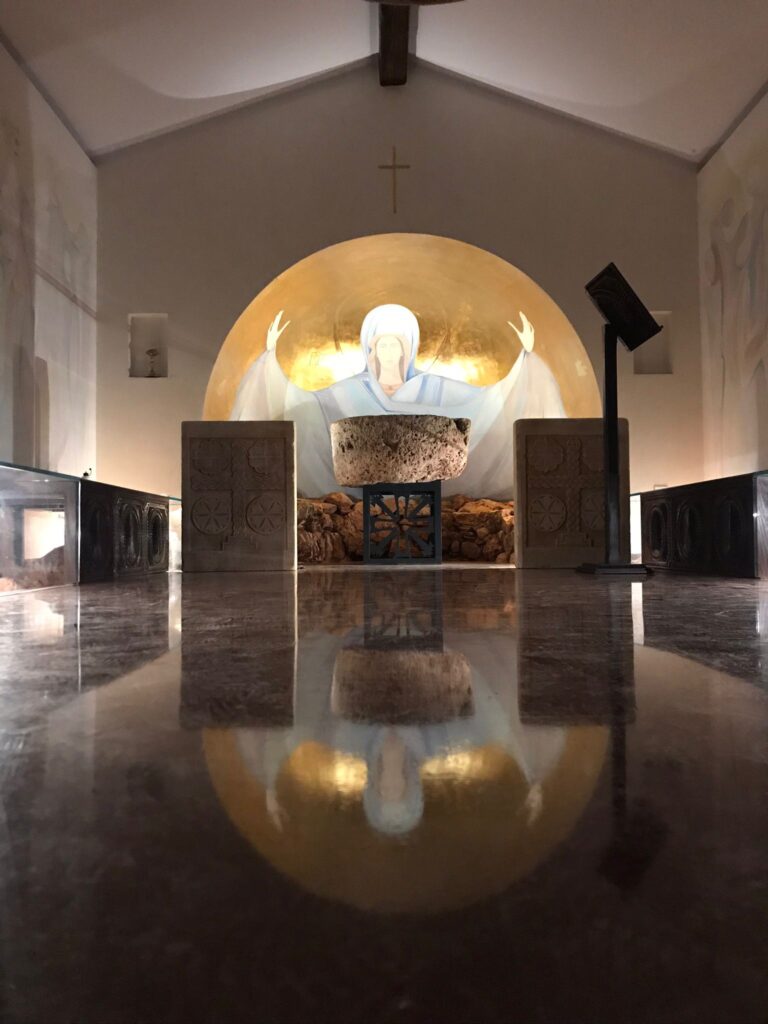
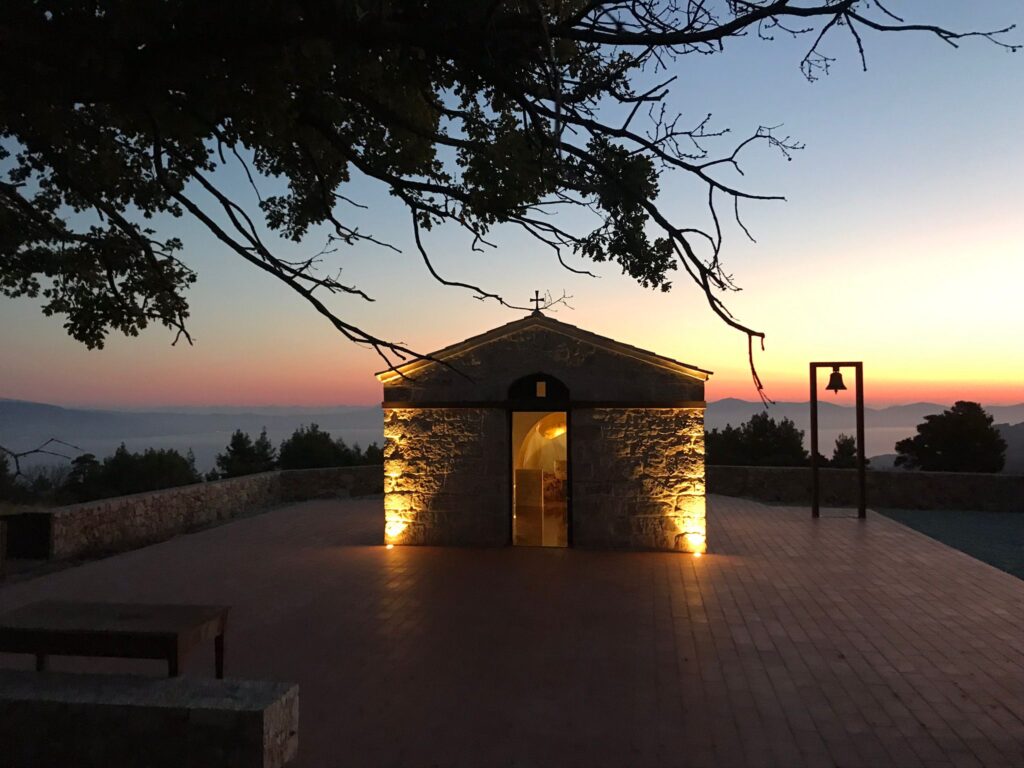
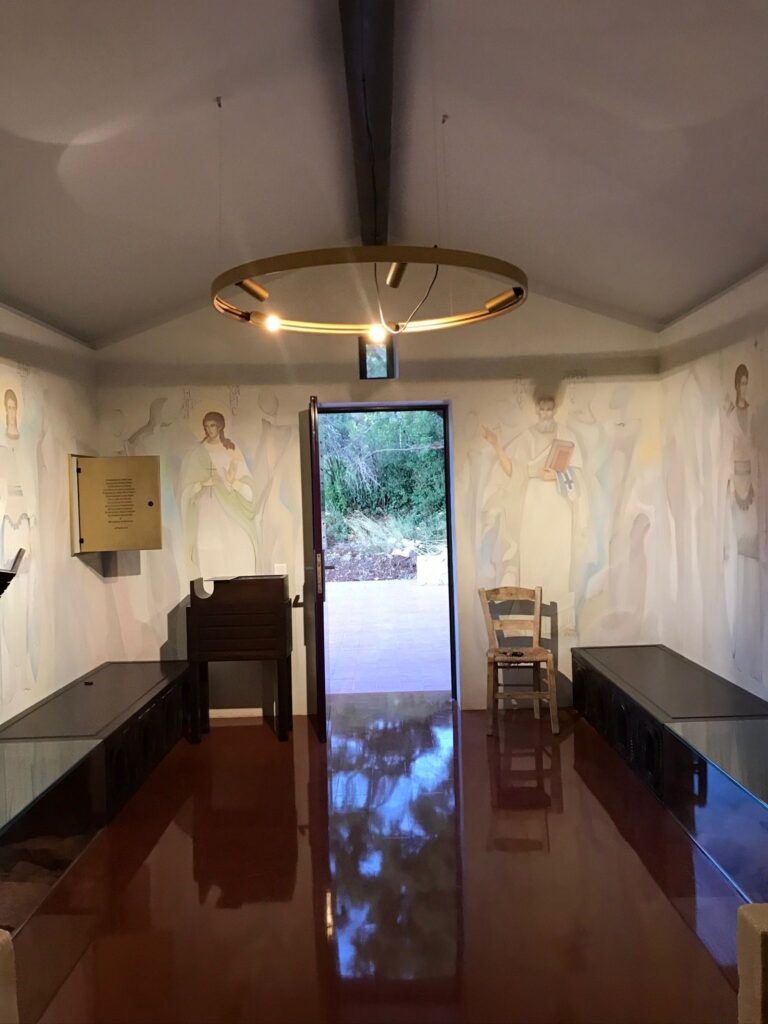
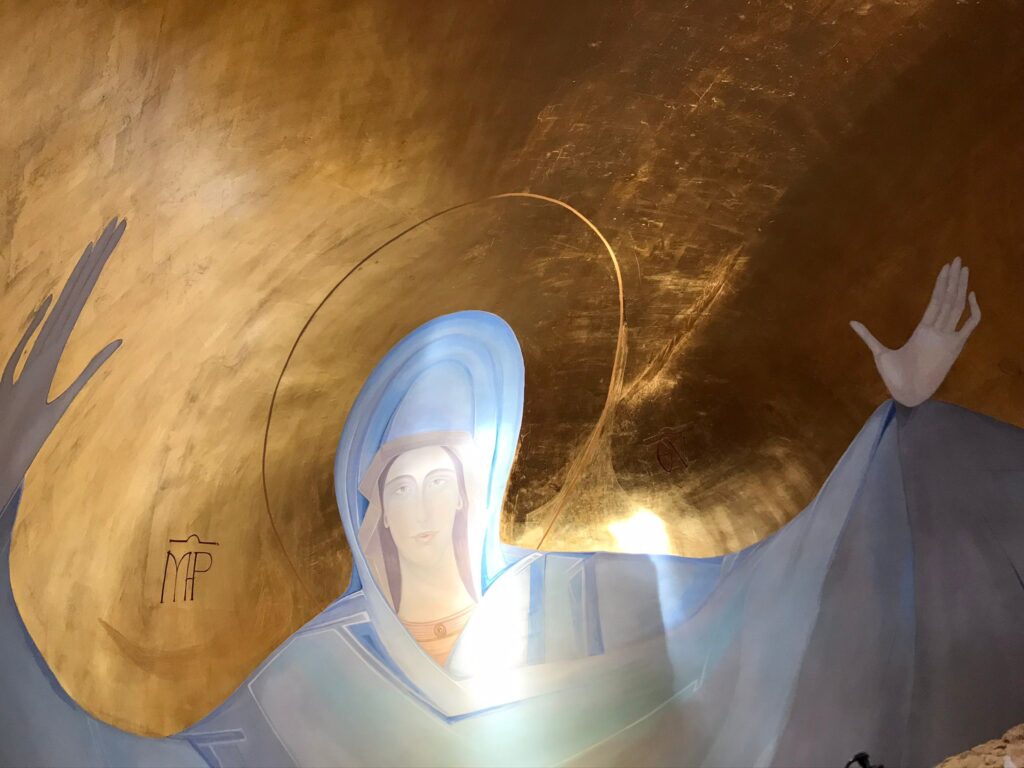
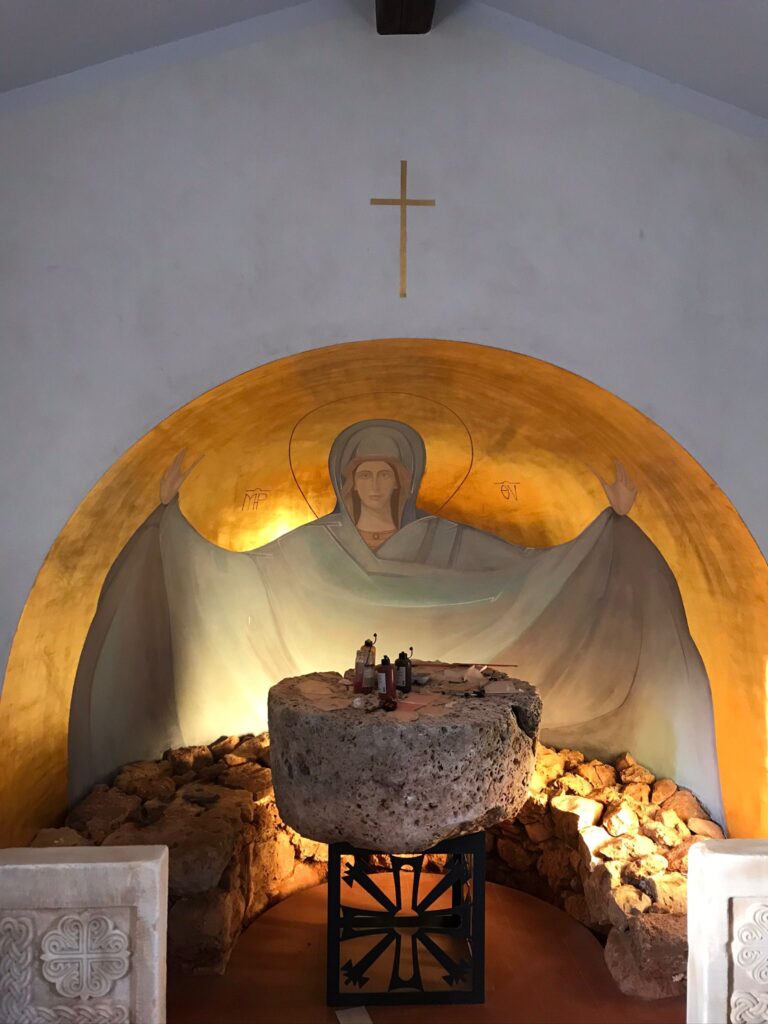
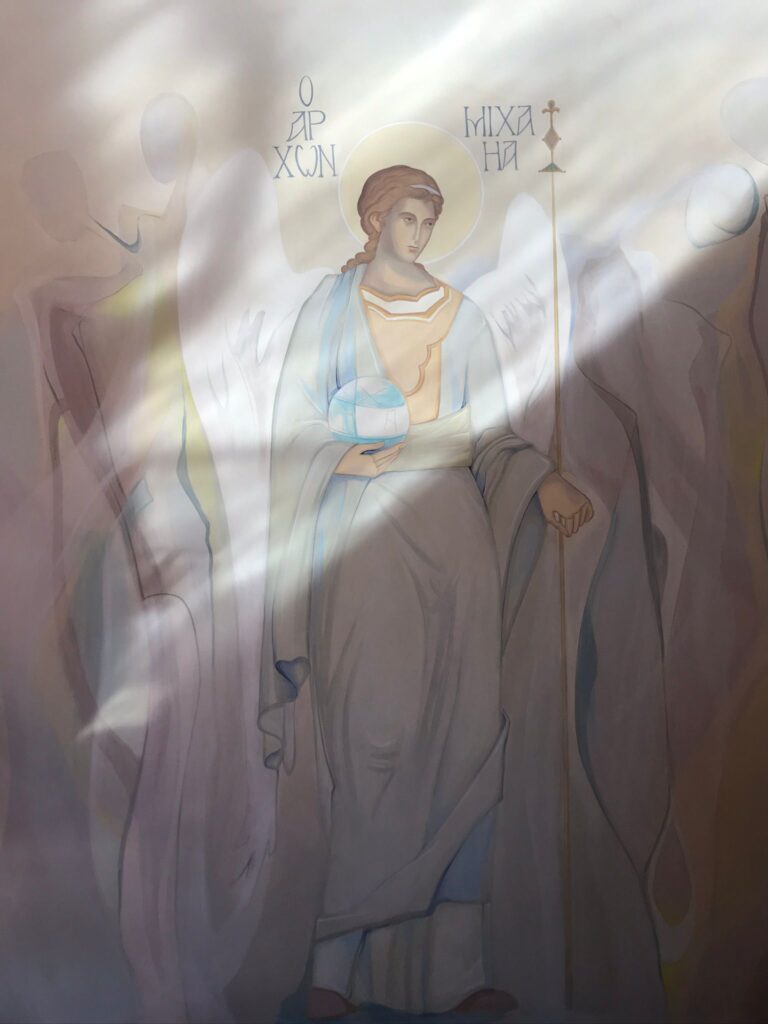
Mural paintings in the Kalamos village church, Greece, by Alina Teodorescu along with her mentor Greek artist Dimitris Kolioussis.
Later in life, as she went on to study architecture and interior design, and travelled internationally as a journalist specializing in the same. It appears, that her development seems to somewhat mirror the atmosphere of a post revolution Romania, emerging as a democracy and a capital driven economy with its emphasis on entrepreneurship, business, and individual strife. She mentioned to me in conversation, that although her travels to centers of European art and lifestyle such as Milan, Paris etc. gave her quick exposure that normally would take much longer; the heartless race for material gain perhaps temporarily made her a victim of run-off-the-mill capitalist constructs and consumerism. This was in retrospect, perhaps a common effect the aftermath of the revolution had on many Romanians emerging out of a communist past.
However, as is usually the case with revolutions, the obvious efforts to invent a new democracy, in the long run, only serve to create more obvious gaps between the rich and the poor. A competitive capitalist mindset isn’t for everybody. Many who had languished under state oppression for years, couldn’t easily learn, or adapt to a sudden reversal of the political and economic landscape.
Alina also noted, that after she went to study shop design in Milan, she grew weary of the rapidly evolving world of interior design, and the ephemerality of localized design projects, that only lead many designers to disillusionment.
“The least of things with a meaning is worth more than the greatest of things without it.” – Carl Jung
However on the flipside of her disenchantment with crass consumerism, art became more interesting to her than design. This coincided with some personal losses in her life, and led her to a new phase as she moved to London, UK and immersed herself in the art world of the so called west; studying art business at the Sotheby’s and practicing painting for a period.
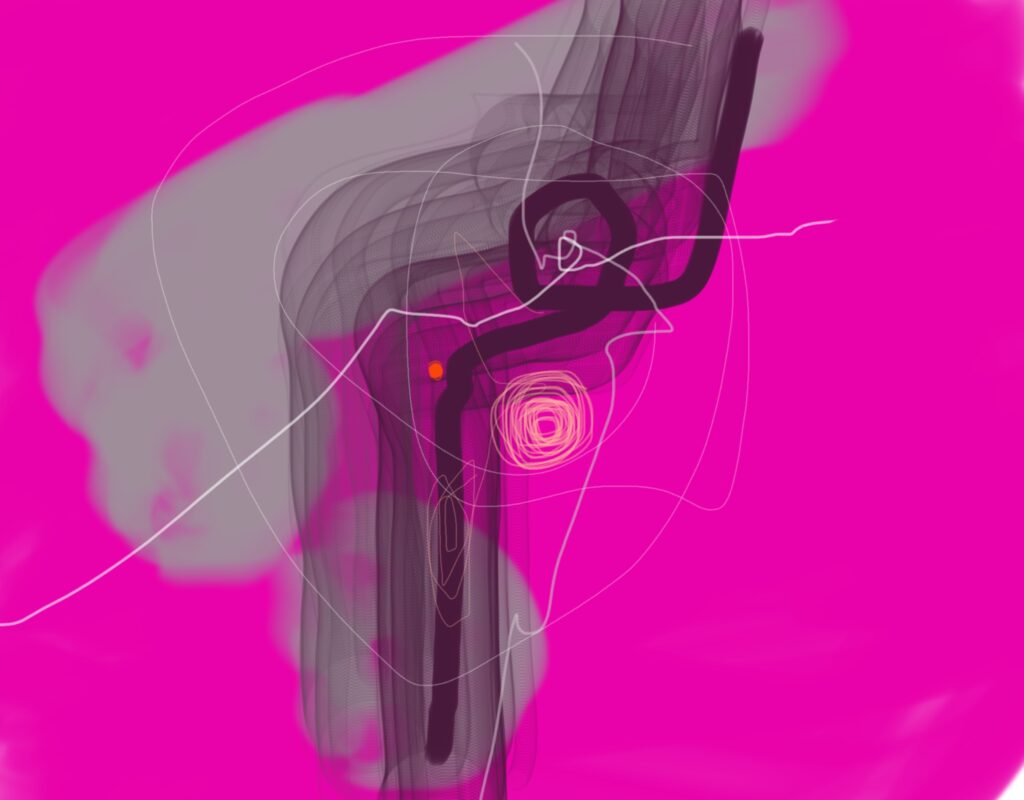
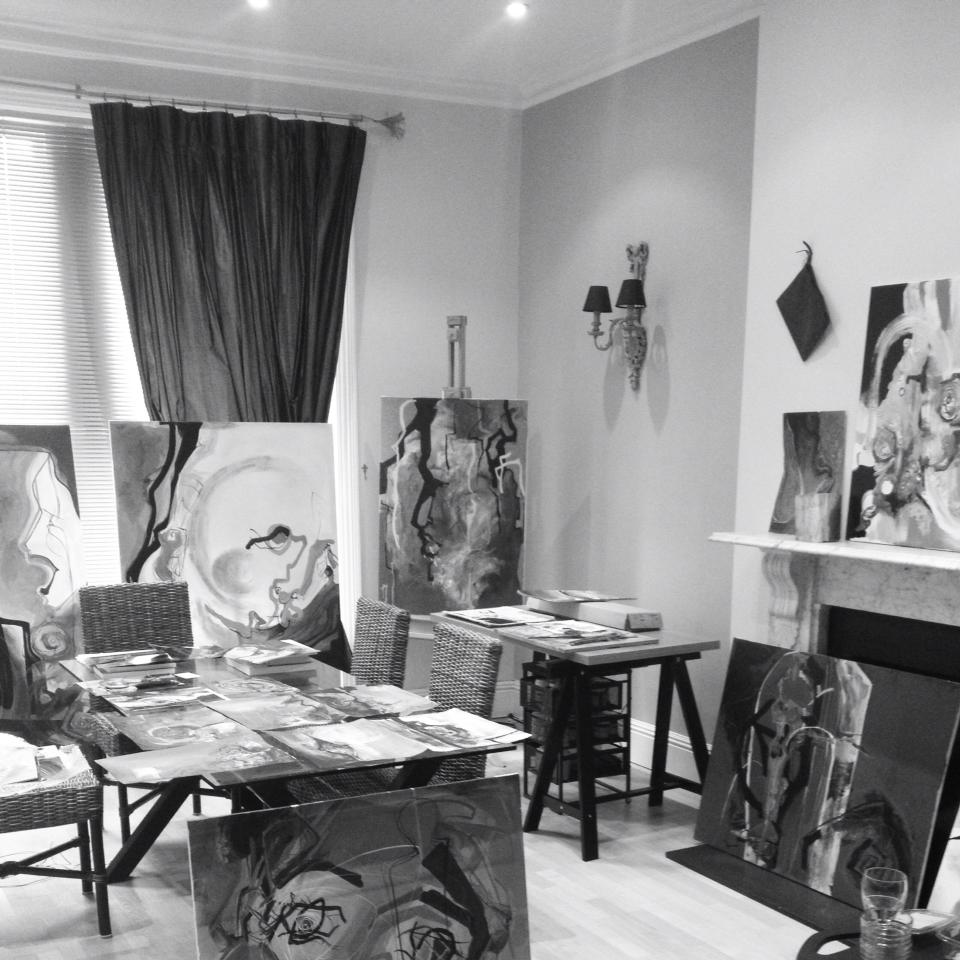
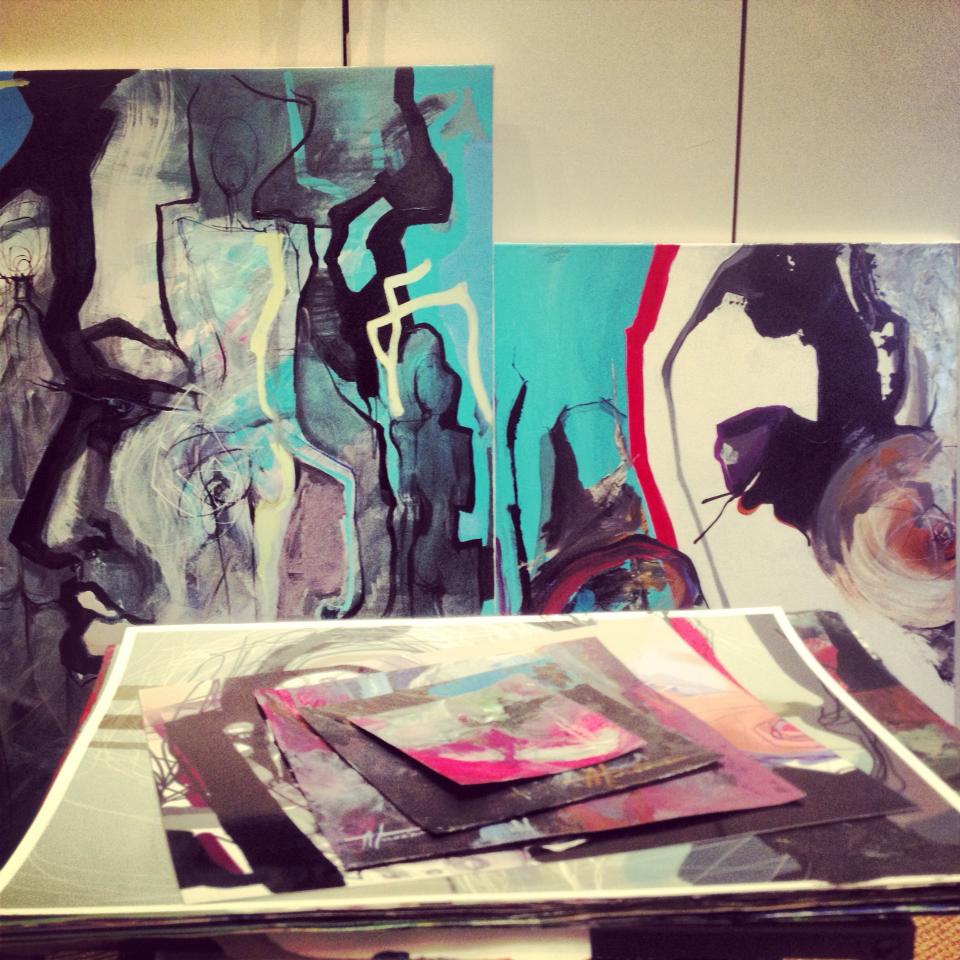
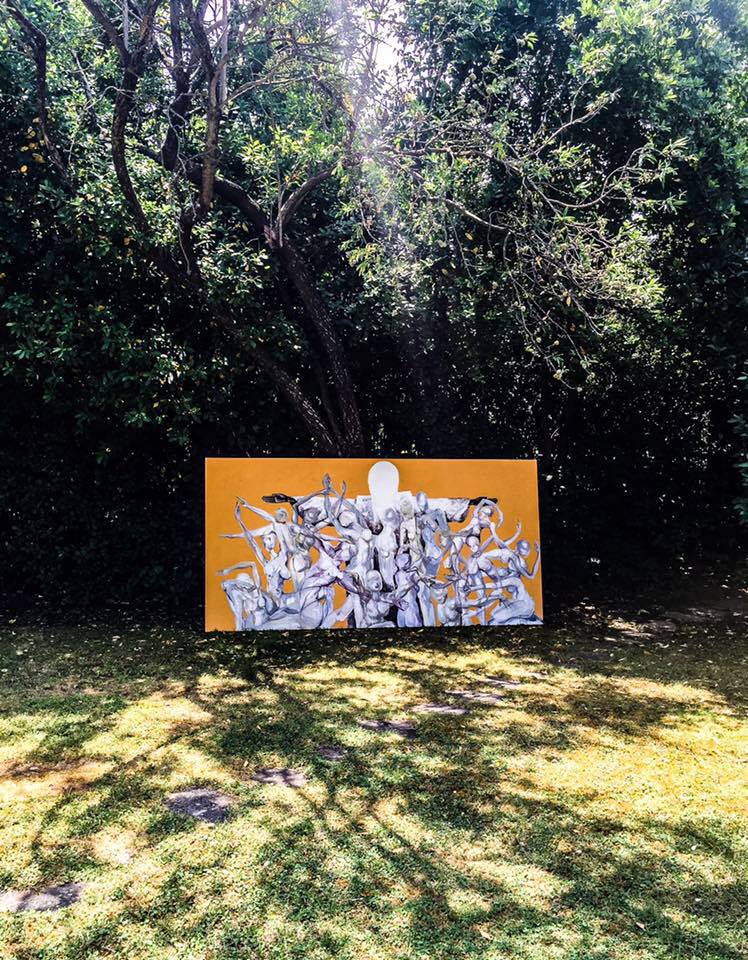
Friends as Catalysts
In 2016, Alina met a well known Mumbai based artist, writer, poet, and overall renaissance man, Sanjeev Khandekar; who being a close friend and benefactor of Chintan Upadhyay is also a key figure in the Sandarbh Artist Residency’s history. Alina marks her friendship with Sanjeev and his partner Vaishali Narkar (also a reputed artist) as a key turning point in her life.

They opened a world to her, where constant cultural and intellectual engagement appeared possible and real. As both Sanjeev and Vaishali are reputed intellectuals, their diverse practices attract frequent engagement with the wider community of the Mumbai art scene, this is the dynamic that Alina responded to rather well.
It was in Sanjeev Khandekar’s Chembur studio in Mumbai, that Alina met artists Shilpa Rangnekar and Lochan Upadhyay, who are active as Sandarbh organisers; and, who informed her about Sandarbh’s many projects and residencies; giving her the essential knowhow of running such an initiative. This triggered the intrigue and the inspiration, which ultimately led Alina to create In Context Slanic Moldova, Romania in 2017.
In Context Slanic Moldova, Romania
In hosting a residency of her own, Alina has transformed her art practice on a number of plains: from internalized expression to externalized preoccupations; from individual to community; from material to ecological; and perhaps a lot many more ways that I may not be able to comprehend. To me, it is evident that she has managed to use curation as performance, as was especially demonstrated by her idea of “a residency within a residency”.
She mentioned in conversation, that to her – the world appears perpetually absorbed in a state of emergency – whether it is political, economical, ecological, environmental, humanitarian… or what have you! Perhaps there is a need for us to envision a future where an alliance of creative thinkers is able to converse at par, with the scientific, industrial, and developmental agencies of the world.
Aside from technology, perhaps a school of humanitarian thinking requires to address these emergencies; so, they may illustrate that – the elemental essences of conservation, inclusivity, and preservation need urgent focus. Perhaps the time has come to show a mirror to crony capitalism, to the crises of resources, to migration, to displacement, and the many modern socio-economic phenomena that can no longer be denied.
As I consider this carefully, I feel that In Context Slanic Moldova, Romania is apparently a just response to the very same concerns – as since its very inception, it has provided the platform for our discourses in good measure, through its many iterations and international participations.
In its very own mission statement, the following has been stated:
“…to encourage people to think for themselves, to understand the complexity of the global world, and to act in solidarity with the nature and future generations to produce a living future.”
– Mission Statement, In Context Slanic Moldova, Romania
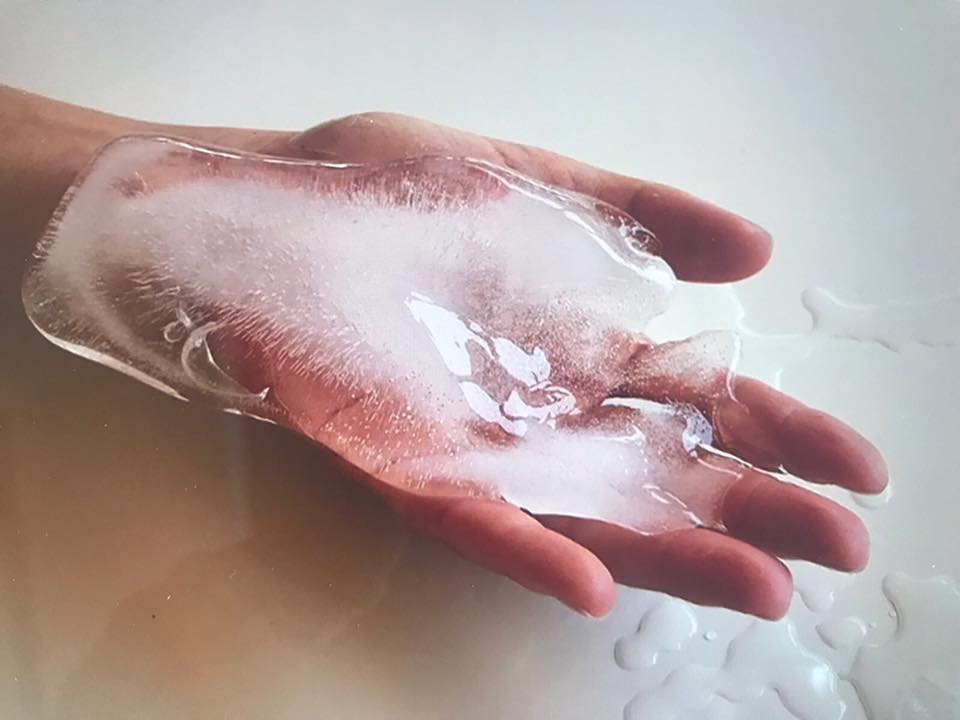
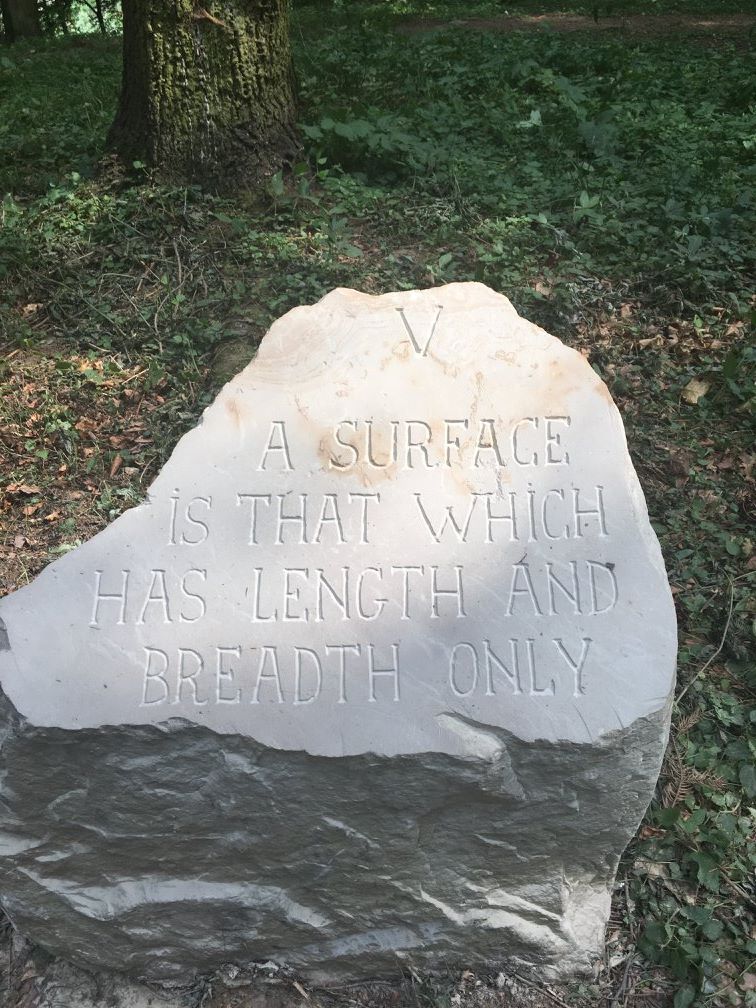
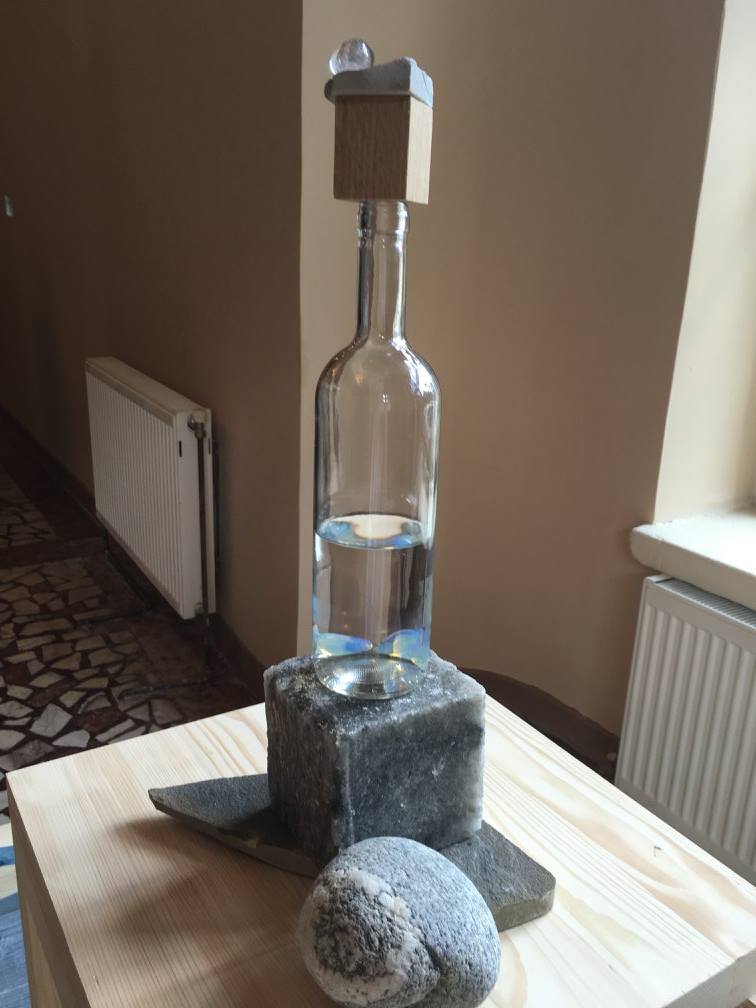
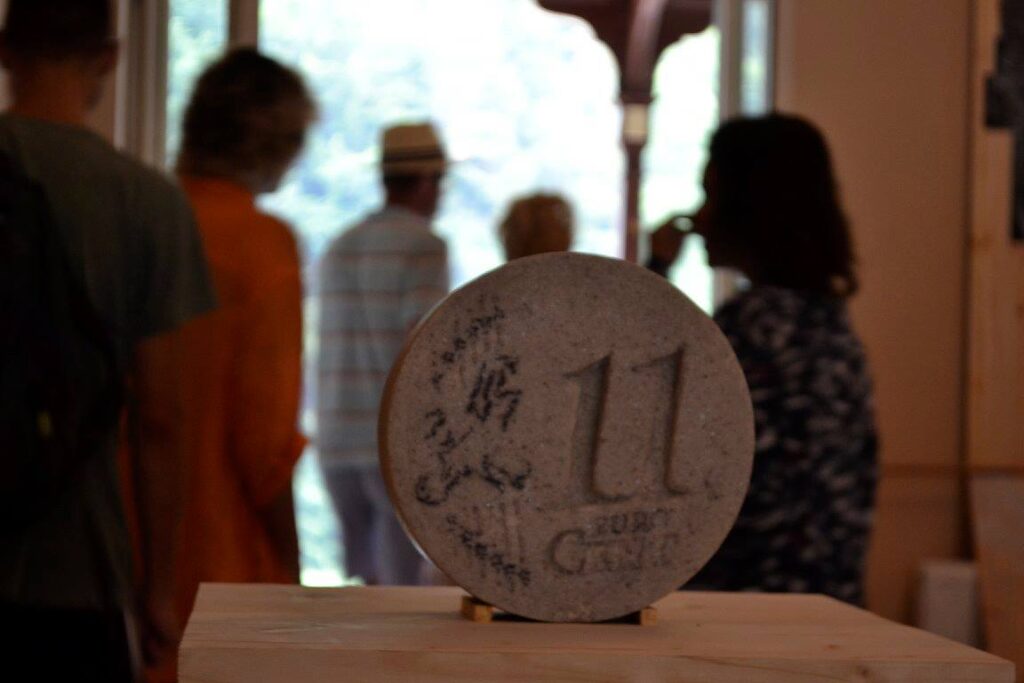
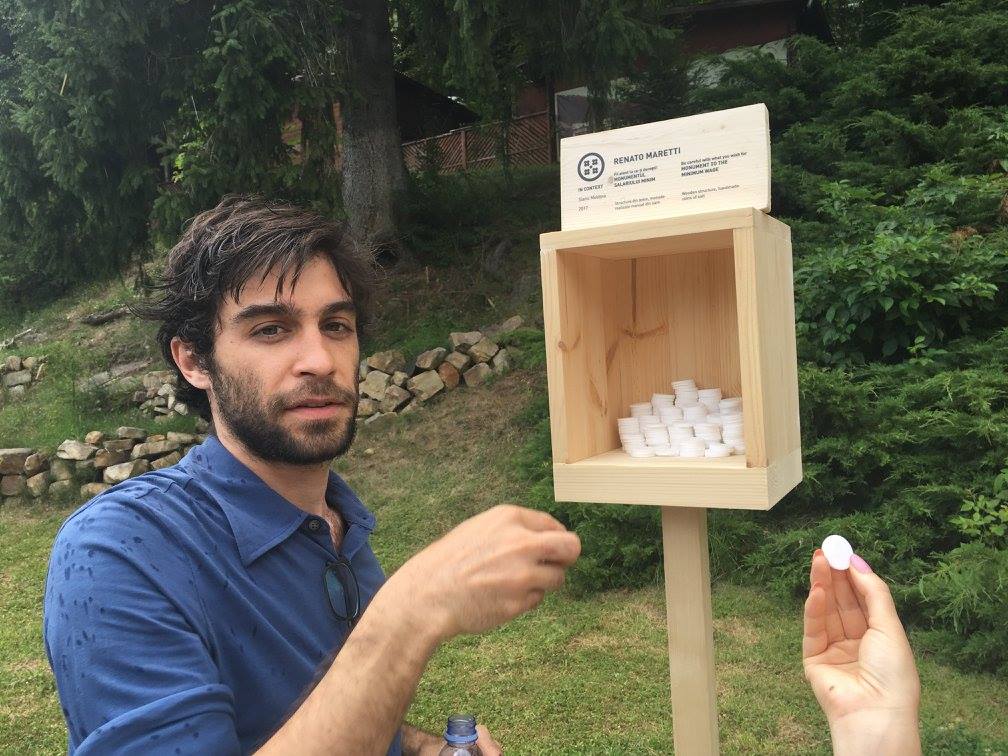
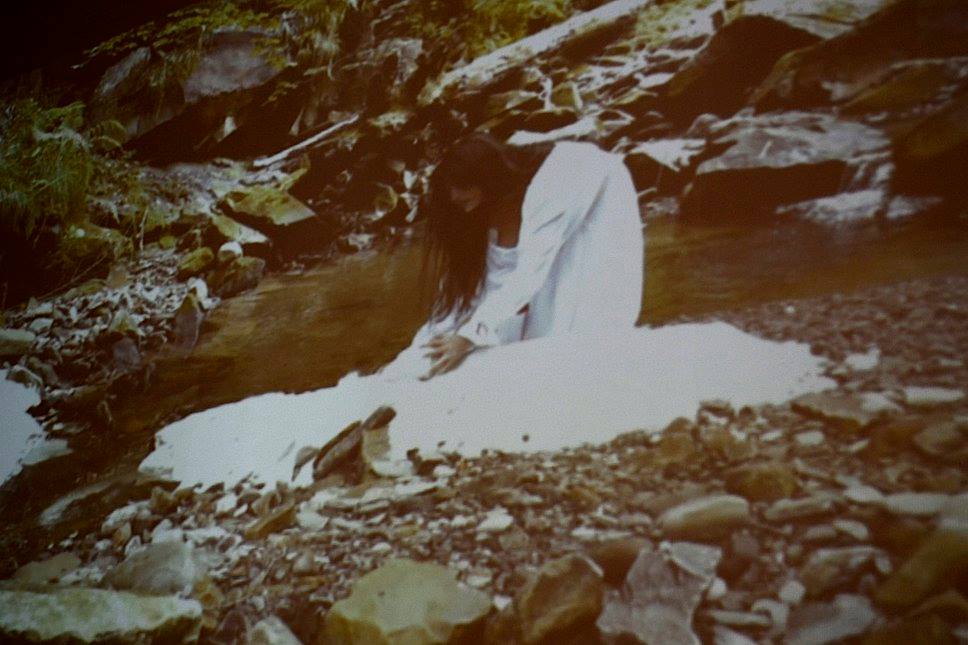
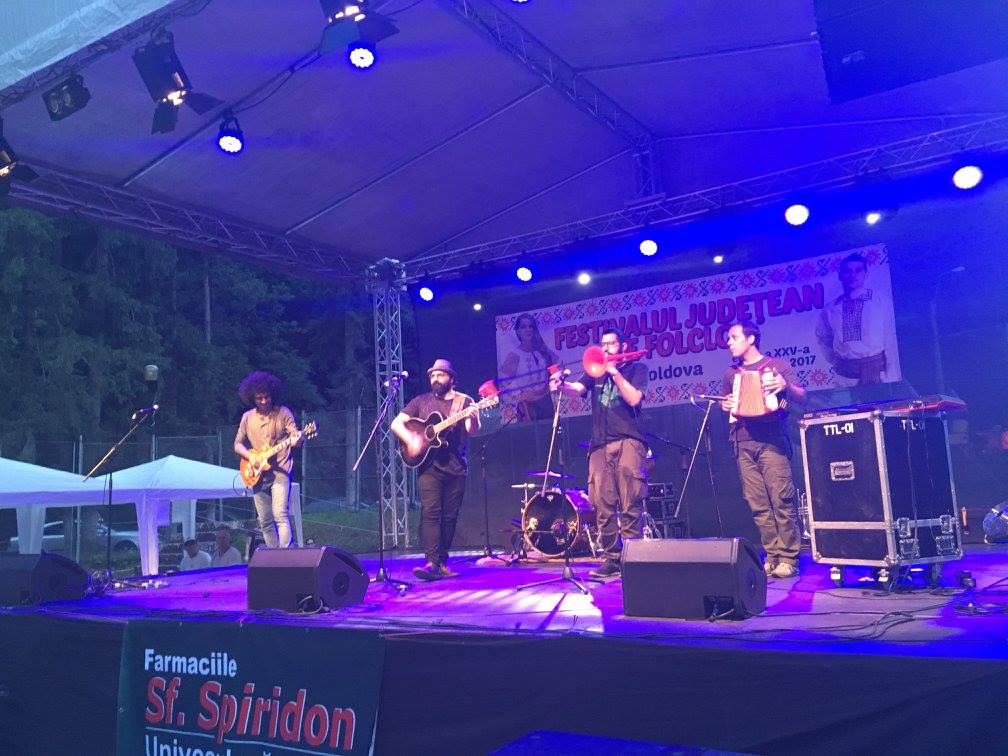
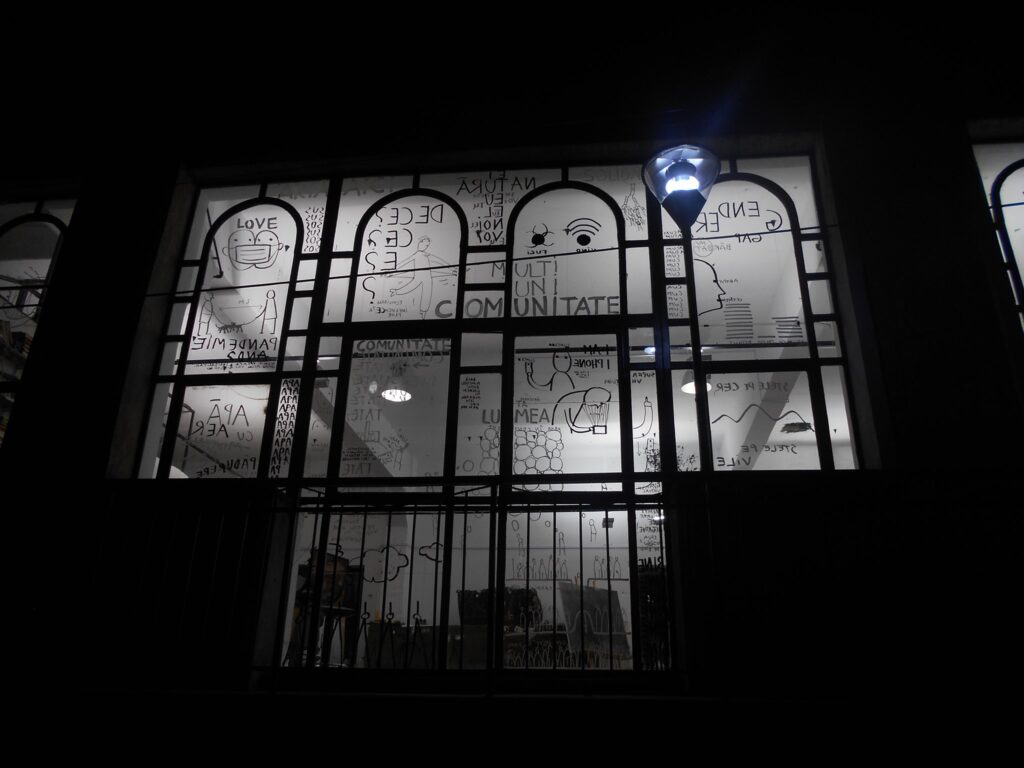
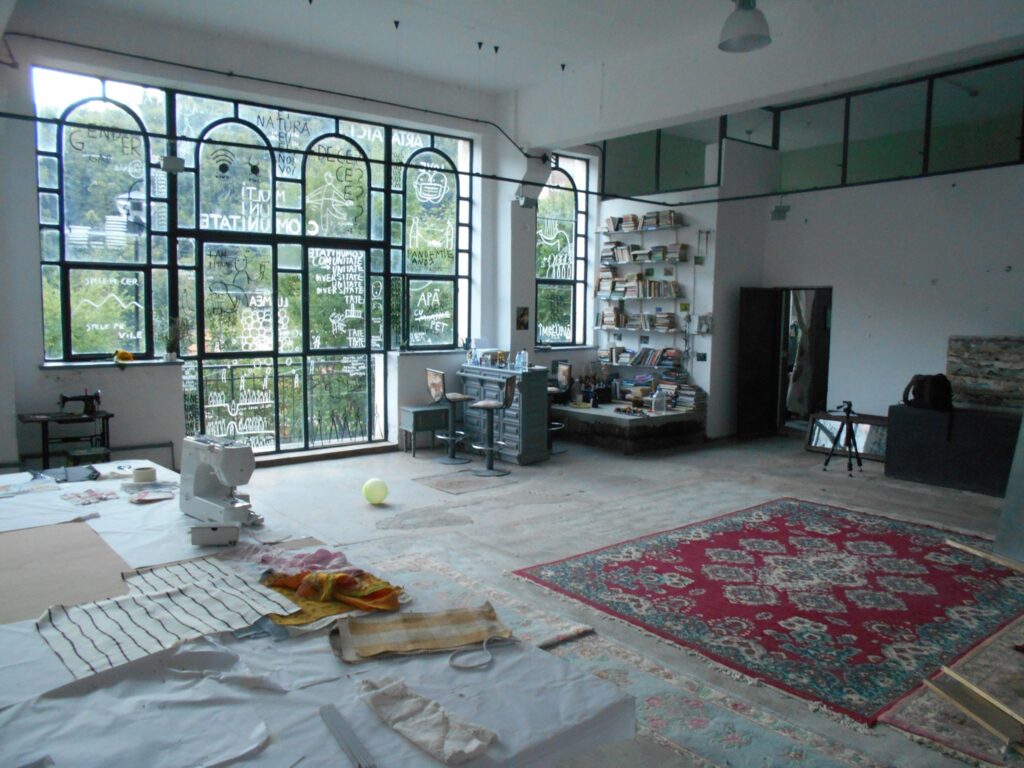
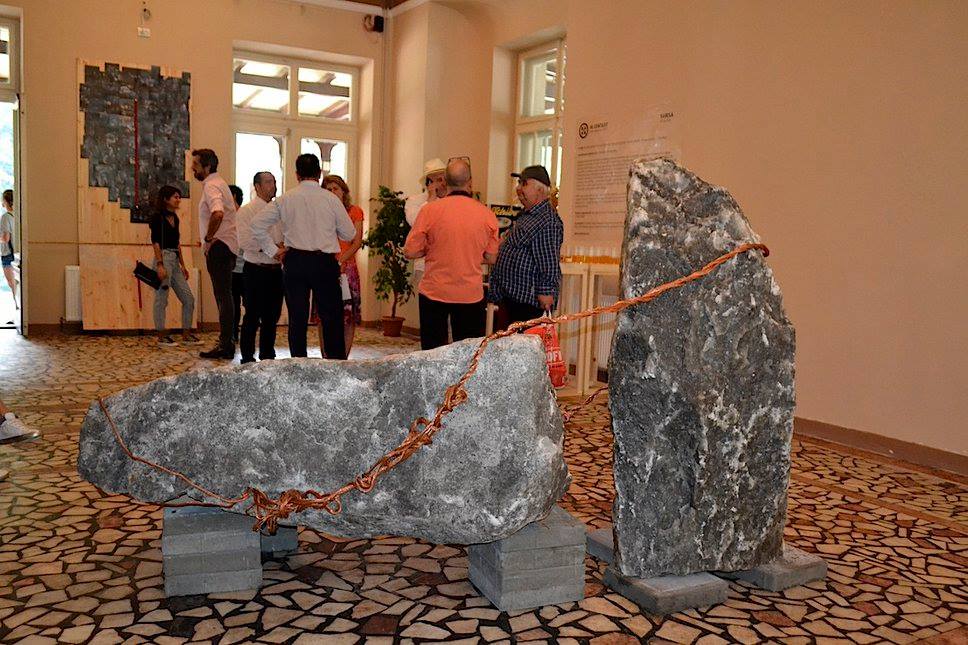
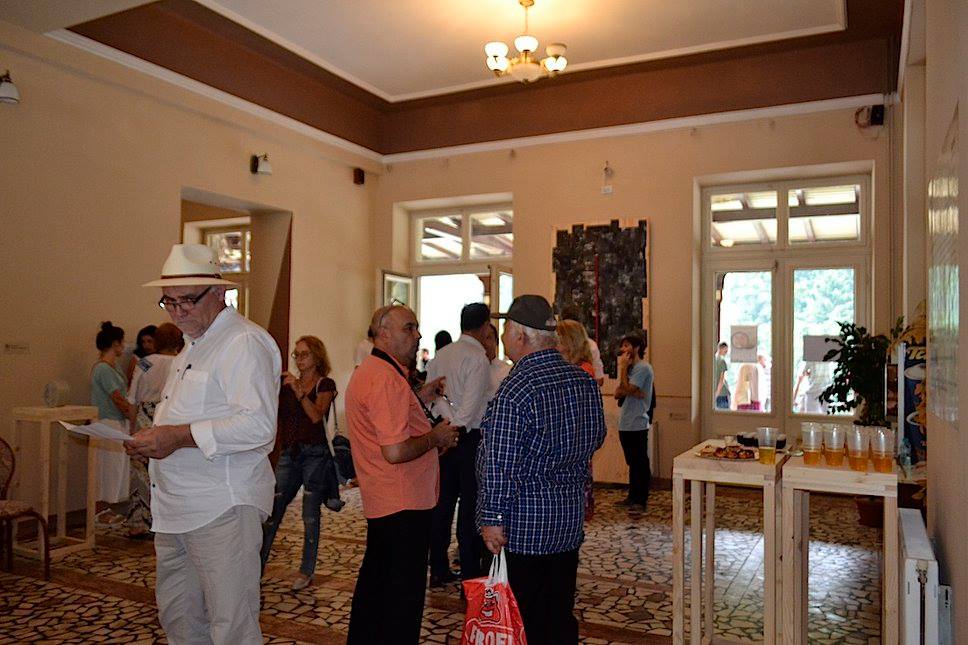

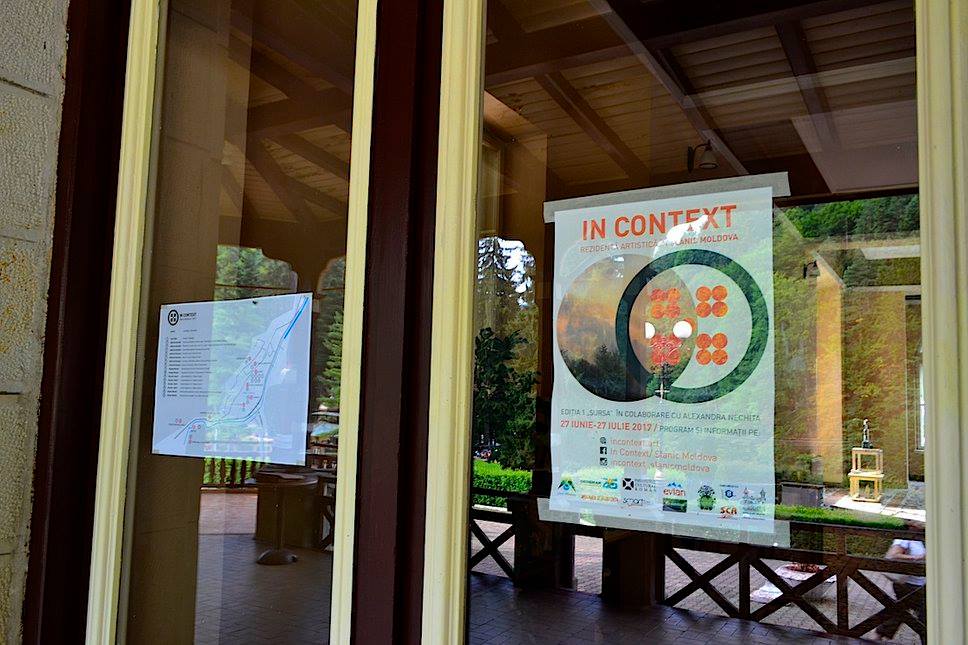
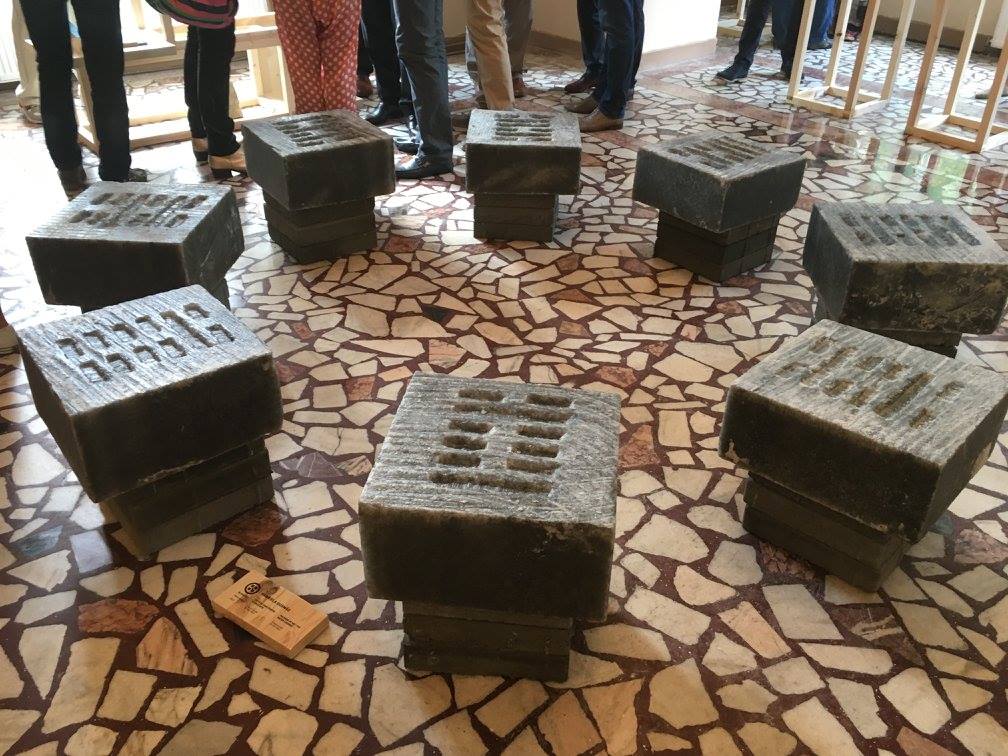
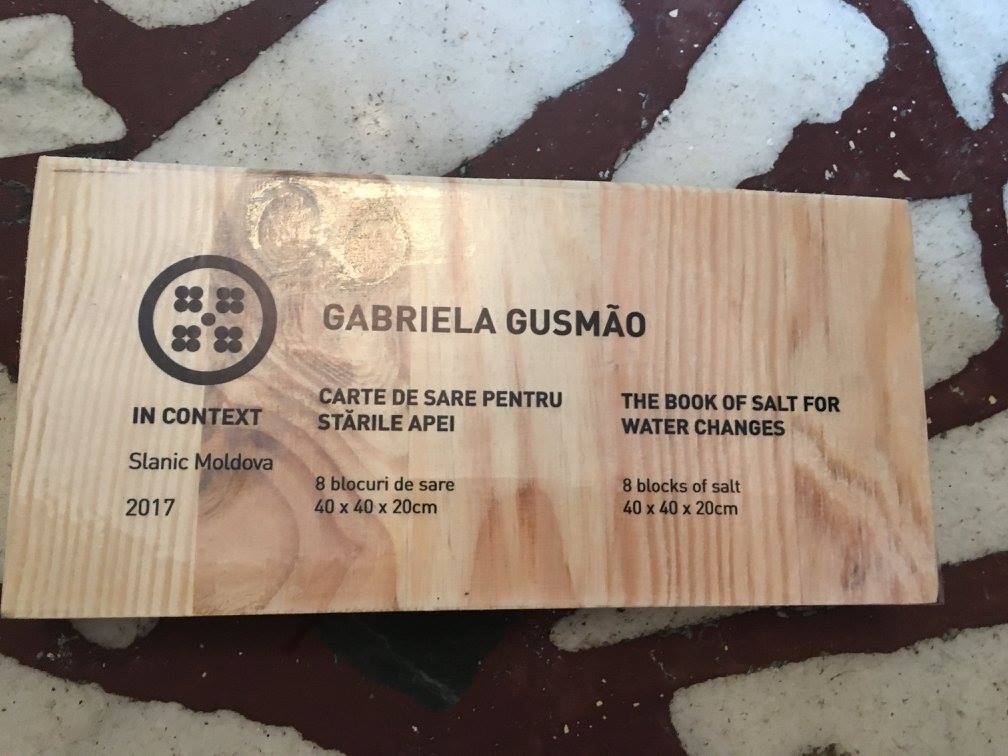
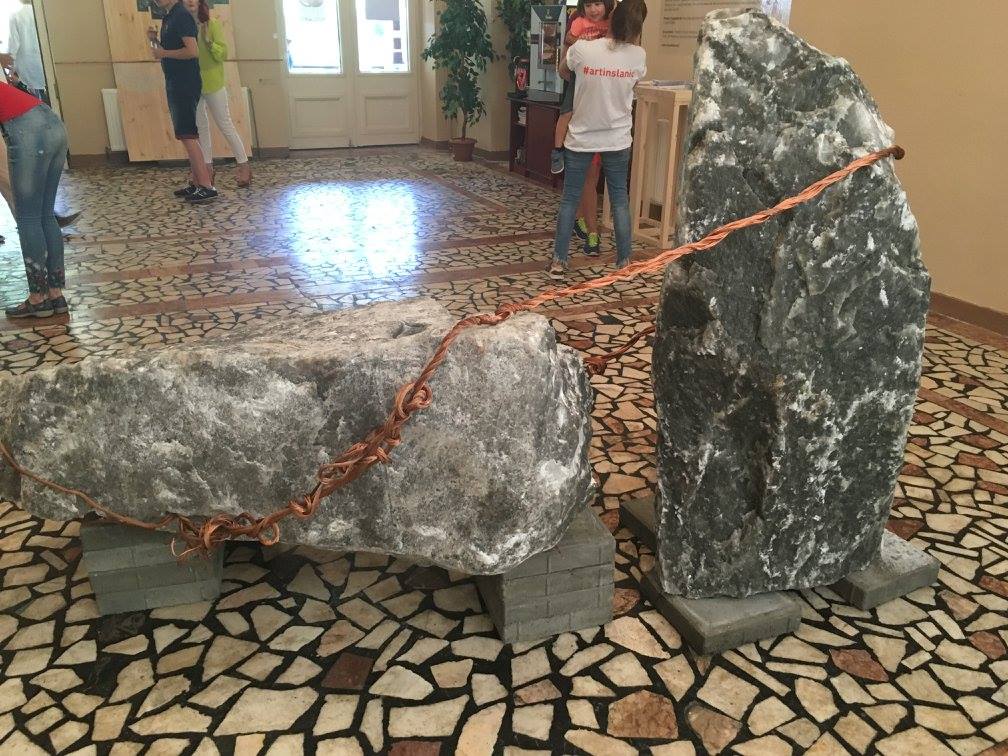

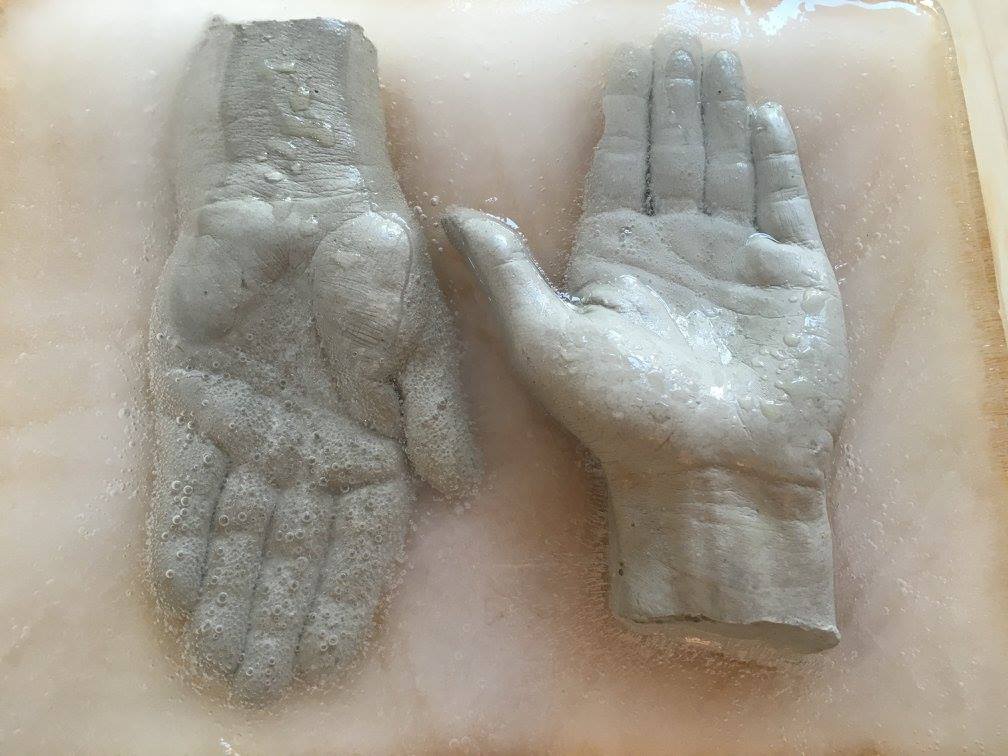
I think, what resides in a resident artist, at least in Alina in particular, is the need to reciprocate to the constant state of emergency, that we manufacture out of our own delusions about progress; and thereby to recognize the cold fact, that we have become habituated to apathetically living our lives in a state of a perpetual yet normalized panic – perhaps it is like an industrially and clinically manufactured global Stockholm syndrome.
Clearly, the need to nurture the discourses that bring us to the awareness – that the time to ponder is gone, and now is the time to act; is justifiably a matter of urgency for us all.